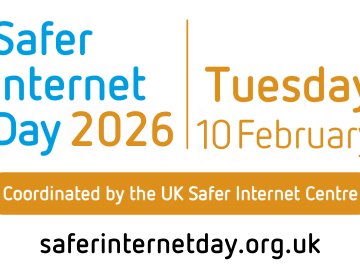The publication of Ofcom’s Additional Measures codes for consultation marks a significant and welcome development in the UK’s approach to online safety. These draft codes include, for the first time, a formal expectation that platforms adopt perceptual hash matching to prevent the re-sharing of non-consensual intimate images (NCII). While the proposals remain under consultation, the message is clear: the regulatory framework is beginning to align with the realities of technology-facilitated abuse.
This is an important moment—one that affirms the direction we at SWGfL have long anticipated. Through StopNCII.org, we have consistently argued that perceptual hashing represents one of the most effective, privacy-respecting tools available to prevent the viral spread of intimate imagery. It protects victims without requiring them to give up control of their images. It empowers platforms to act pre-emptively. And, when deployed widely, it has the power to create a meaningful layer of accountability across the digital ecosystem. It is encouraging that Ofcom’s consultation cites StopNCII.org as an example of best practice, recognising the platform’s privacy-preserving approach and its growing adoption across the sector.
From Vision to Infrastructure
Since the launch of StopNCII.org, our vision has been ambitious: to create a globally trusted, technically robust, survivor-centred solution that any platform could adopt. That vision has not changed. What has changed is the landscape around us; a landscape we have helped to shape through consistent advocacy, technological innovation, and the development of practical tools for implementation. With Ofcom’s latest proposals, perceptual hashing is no longer a best practice for some, it is fast becoming a regulatory expectation for many.
In response, we are preparing the next phase of StopNCII’s infrastructure, designed to accommodate the thousands of platforms that has been indicated may fall within scope. This includes improvements to onboarding processes, administrative tooling, and technical support systems to ensure that integration can be as seamless and scalable as possible to meet the proposed demand.
We do not undertake this work lightly. Building capacity at this scale requires investment, coordination, and confidence in the direction of travel. We are not starting from zero: across our safeguarding portfolio, SWGfL already supports tens of thousands of schools, colleges, and professionals working with children and young people. This existing infrastructure provides a strong foundation for scaling new systems, and our work with StopNCII.org has already demonstrated that platforms of all sizes, from the world’s largest tech companies to smaller specialist services, can integrate quickly and effectively. Scalable, secure infrastructure is not only achievable, it is sustainable when built with purpose and foresight.
A Cautious Optimism
As we prepare for increased adoption, we do so with cautious optimism. It is encouraging to see the regulatory momentum align with what survivors and practitioners have called for over many years. But the successful implementation of these codes will not happen by virtue of their publication alone. Platforms must respond, and enforcement will likely need to follow.
We have no doubt that a growing number of platforms will step forward voluntarily. We applaud those already engaged and we welcome the early adopters who understand that protecting users is both a moral and operational imperative. But the wider success of these measures will depend on the strength of the regulatory mechanism that underpins them.
We do see that despite earlier requirements to hash-match to prevent child sexual abuse material (CSAM), the widespread uptake of those technologies remains slow. The same risk exists here. Without meaningful enforcement, there is little to suggest that a new requirement to hash-match for NCII will see a fundamentally different outcome. We expect Ofcom, supported by government, to ensure that platforms which fail to engage, whether through delay or outright avoidance, are met with timely and effective enforcement action. Many platforms operate beyond traditional regulatory reach, but that cannot become an excuse for inaction. Enforcement must be visible, credible, and persistent.
Shared Responsibilities
We remain confident and committed. Our efforts to build the infrastructure needed to support thousands of platforms reflect not only our technical ambition, but our capacity and belief in the impact this can have for victims of NCII, across the UK and around the world. That belief is what drives us to invest ahead of demand, drawing on charitable reserves to ensure the system is ready should the consultation’s expectations be realised. StopNCII.org was designed with this scale in mind, both in terms of its technical architecture and its governance model, providing a stable foundation for the kind of widespread platform adoption that is now being proposed.
As the conversation moves from design to delivery, it is important to recognise that such systems require more than technical readiness. Their long-term sustainability will depend on a shared resolve, one where regulatory intent is matched by early platform adoption and meaningful enforcement. We continue to value Ofcom’s collaborative approach, and trust that, together, we can create the conditions in which this infrastructure can fulfil its intended purpose.
Looking Ahead
The consultation on the Additional Measures codes is an opportunity to set a standard that not only addresses the harms of today, but prepares for the challenges of tomorrow. NCII is not a fringe issue; it is a global, gendered, and growing form of abuse. Tackling it requires bold tools, broad adoption, and resilient partnerships.
StopNCII.org stands ready, not only to support platforms in meeting emerging expectations, but to continue shaping global best practice in preventing NCII. With a trusted network of international NGO partners and a growing portfolio of platform integrations, the model is already demonstrating its global relevance and reach. Our infrastructure is evolving, our partnerships are expanding, and our mission is as clear as ever. But success will not be measured by statements of intent. It will be measured by how many platforms take action and by how effectively they are held to that obligation.
The next step is not only ours to take.






